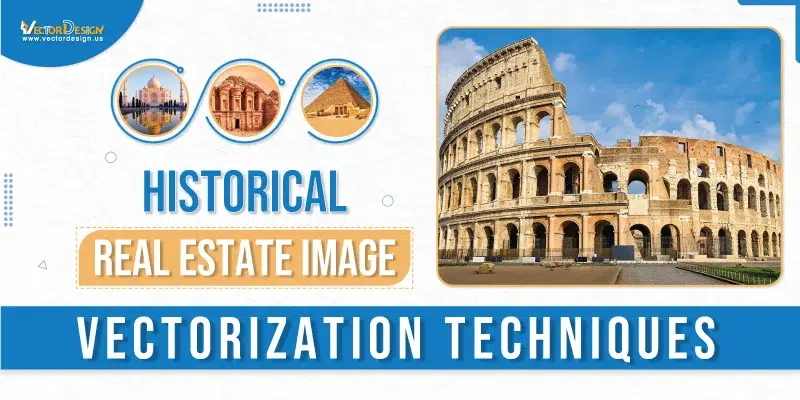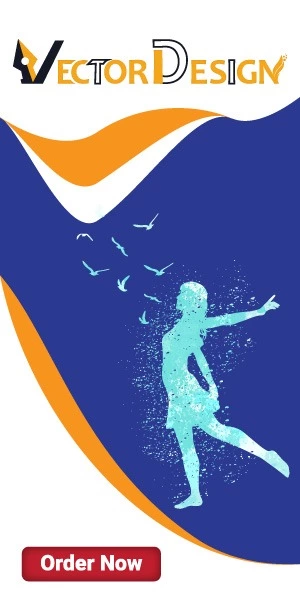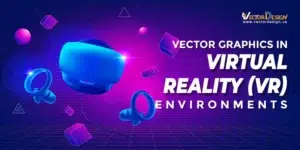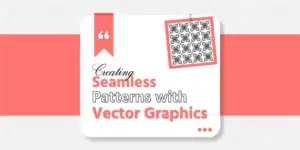Historical Real Estate Image Vectorization is like magic for old pictures of buildings. It’s a way of turning those old-fashioned or faded images into modern ones. Versatile graphics that can be made bigger or smaller without losing their quality. This magic uses math to describe the pictures with points, lines, and shapes. This unique quality finds its pinnacle in the process of image to vector conversion.
Think of it as turning old photos, maps, or drawings of historical buildings into cool, modern graphics. This process uses math to create a special version of the images using points, lines, and shapes. Doing this helps keep the historical details in a flexible and detailed way.
Vectorization is super important for saving and sharing old pictures of buildings. When we turn these images into special graphics, we keep all the tiny details just right. This isn’t just about making old pictures look better; it’s also about using them in today’s technology. We can also make the pictures bigger or smaller without them looking blurry or losing quality. This is handy for keeping a record of old buildings and teaching others about them.
Techniques of Historical Real Estate Image Vectorization:
Certainly! Let’s explore different ways to present the techniques of Historical Real Estate Image Vectorization:
Manual Vectorization

Manual Vectorization is like turning old pictures into digital art. It’s done by carefully tracing the shapes of historical buildings using a digital pen or mouse, making a clear and precise picture. Another way is using a special tool to draw lines and shapes around the buildings, making everything look neat. Sometimes, artists add a creative touch, making the old pictures look even better while keeping all the important details. So, manual vectorization is not just about changing pictures; it’s about making them into digital art with care and a bit of creativity.
Automated Vectorization:

Imagine the computer as your smart friend turning old building pictures into something new. First, it uses tricks called Image Processing Algorithms. It draws bold lines around the buildings, like using a bright marker, and makes the colors pop, just like adjusting your TV. This helps the computer understand all the details in the buildings. It also cleans up any specks or fuzziness, like erasing little dots on paper, making the pictures look neat.
Next, the computer learns from pictures using Machine Learning Approaches. It’s like teaching the computer by showing lots of building examples. With time, the computer becomes good at recognizing buildings on its own. There’s a special thing called Convolutional Neural Networks (CNN), which is like computer solving puzzles. It breaks pictures into tiny pieces, learning about specific details in buildings. This makes the computer super clever at understanding and remembering different parts of the pictures. So, with these tricks, the computer becomes smart at transforming old building pictures into something fresh and clear.
Hybrid Approaches
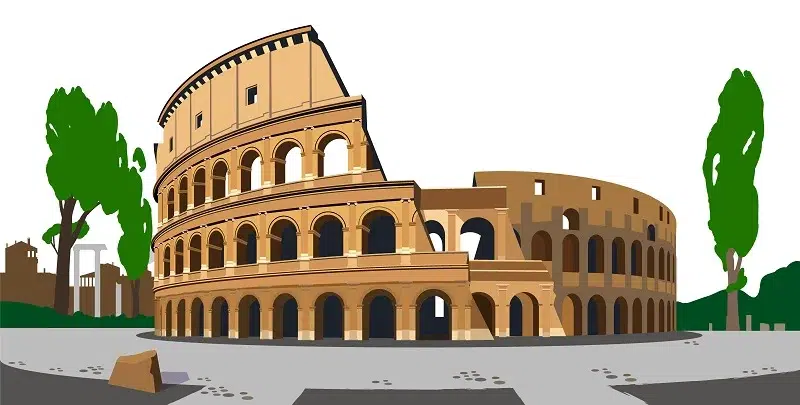
Imagine a group of friends working together to make old building pictures look awesome. Some friends are using their hands to carefully trace and draw the important stuff in the pictures. Then, other friends, who are really smart computers, join in. These computer friends use their magic to make the colors pop and clean up any messiness in the pictures. It’s like teamwork where everyone does what they’re best at to make the pictures fantastic.
There’s also a cool way of teaching the computer with a bit of help. You show the computer some building pictures and say, “This is a building, and this is another one.” Then, the computer learns on its own from more pictures. It’s like giving the computer a little push to get started, and then it becomes super smart, figuring things out all by itself. So, these Hybrid Approaches mix the hands-on work of people with the clever skills of computers, making sure the pictures look amazing and the computer becomes really good at understanding them.
Preservation and Restoration:
In the world of pictures, preservation, and restoration are like superheroes for old building images.
- Keeping Things Safe:
- Think of vectorization like putting old building pictures into a special protective cover. When we turn these pictures into vectors, it’s like wrapping them up safely. This helps keep all the important details in the pictures secure, so they don’t get lost over time. Vectorization is like a shield that makes sure the pictures stay the way they are, even as time goes by.
- Making Old Things Look New:
- Imagine you have a magic tool that can fix old pictures. After we’ve wrapped them in the protective cover (vectorized them), this magic tool can make them look fresh and new. It’s like giving the pictures a makeover, making sure they stay clear and bright. So, when we restore vectorized images, we’re making old things look great again, just like using a special tool to make them shine.
These are the ways we use vectorization to keep old building pictures safe and make them look wonderful again.
Challenges and Limitations:
Facing this interesting task comes with its set of challenges and limitations that we need to be aware of:
Accuracy Concerns:
Think of accuracy concerns like making sure a computer does a perfect job when turning old building pictures into something new. We want the computer to be careful, like when you’re coloring inside the lines. It needs to capture all the tiny details in the old pictures and not make mistakes. Accuracy is about making the new pictures look just like the old ones, so we can trust that the history in them stays right.
Ethical Considerations in Altering Historical Images:
When altering old photos of buildings, we must consider ethical implications. It’s about being fair and honest, like playing a game with rules. We want to be careful not to change the pictures too much, so they still tell the true story of the past. Ethical considerations are like a guide to make sure we respect the history in the pictures and don’t do anything that wouldn’t be right. It’s about being a good friend to history.
Resource Intensiveness:
Think of resource intensiveness like making sure the computer doesn’t get too tired when it changes old building pictures. It’s about managing the computer’s time and energy, so it doesn’t work too hard. We want to find smart ways for the computer to do the job without using too much energy. Resource intensiveness is like making sure the computer stays happy and doesn’t get overwhelmed.
Applications of Historical Real Estate Image Vectorization:
The applications of historical real estate image vectorization are pretty cool and useful. Let’s take a closer look:
- Educational Uses: Turning old building pictures into clear and detailed graphics helps students and researchers learn about historical real estate. These images can be used in books, lessons, and projects.
- Archival Preservation: Changing old property pictures into a special format keeps them safe from damage. It’s like putting them in a digital vault to make sure we don’t lose any historical details.
- Public Engagement: Making historical building pictures look nice and clear helps everyone see and enjoy them. It’s like sharing a cool story from the past that everyone can be interested in.
- Digital Exhibits: Using special pictures, we can create online exhibits to show off historical buildings. It’s like making a virtual museum where people can explore and discover interesting things about the old buildings.
Conclusion
In conclusion, let’s go over the main things we talked about. We discussed the importance of turning historical real estate images into vectors, which are simplified versions that computers can understand easily. To sum up, this process helps us analyze and understand historical real estate better. It’s like turning a detailed picture into a simple drawing so that we can study it more easily. Why is this important? Well, it helps us preserve and learn from the past. By converting these old pictures, we can keep a record of how things were and make sure we don’t forget our history. Looking ahead, we should keep exploring and studying this technique. There’s a lot more we can do with historical real estate image vectorization. It’s like solving a puzzle that can teach us even more about our past.
So, let’s keep going! Encourage others to research and use these methods. There’s a whole world of knowledge waiting for us in those old pictures, and we just need to unlock it.


